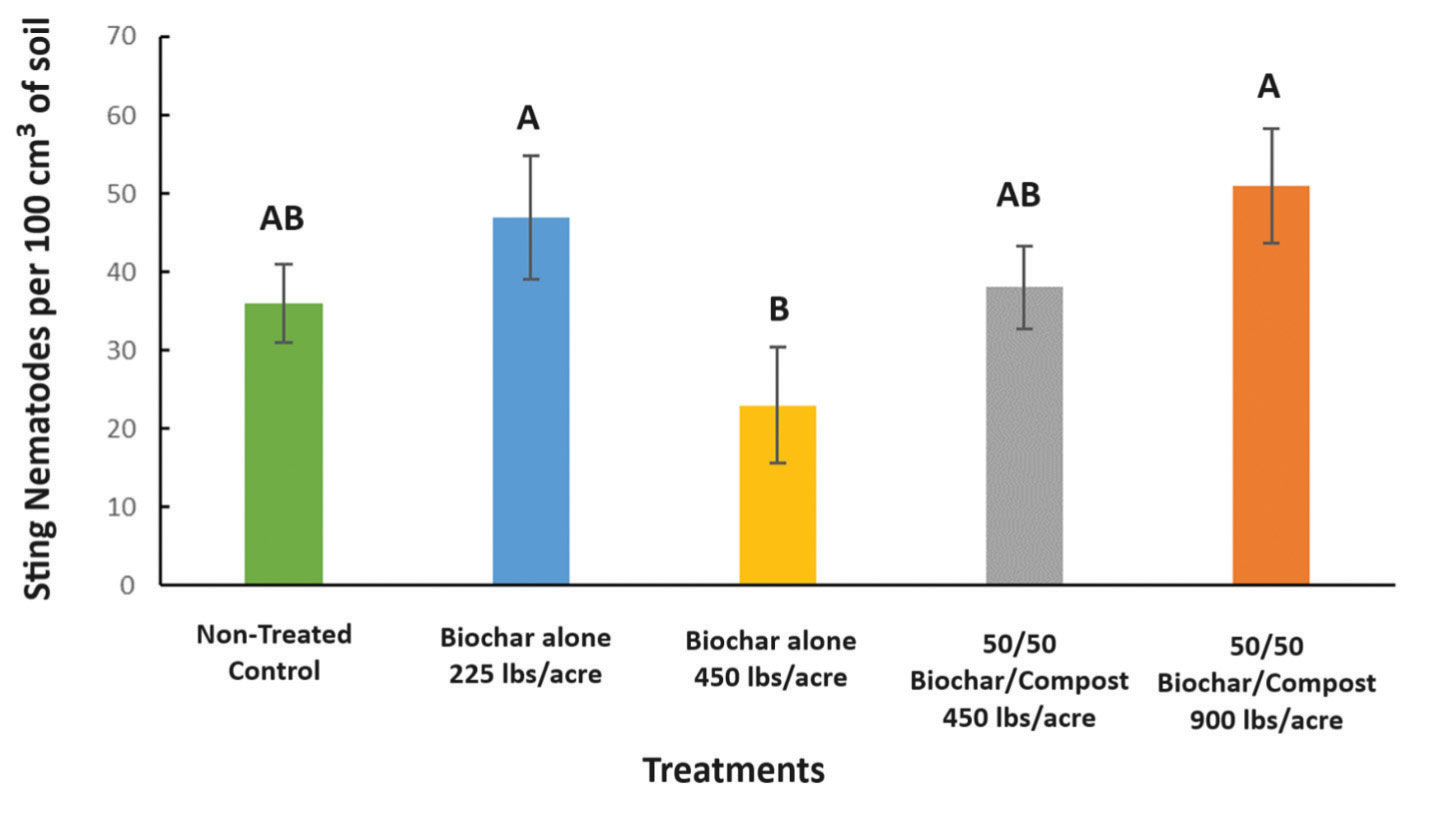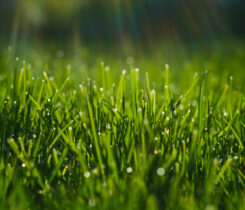Can biochar control sting nematodes?
At Clemson University, MS graduate student Malone Thomason, under the direction of Joseph Roberts, Ph.D., examined the effect of topdressing or soil-incorporated biochar amendments on sting nematodes (Belonolaimus longicaudatus).
The sting nematode is a prevalent plant parasitic nematode associated with common and hybrid bermudagrass. They are very persistent, and the research sought a long-term management solution. Previous studies in various crop systems indicated that biochar and compost amendments reduced nematode populations.

The sting nematode population in bermudagrass fairway turf as impacted by amendment topdressings from Sept. 2020 through July 2022. Treatment columns sharing the same letter are not significantly different.
Thompson wanted to see if biochar and amendments would work in turfgrass. In the first of two multiple-year field experiments, he examined five treatments on bermudagrass maintained as a golf course fairway.
The treatments were: none, 50/50 biochar/compost blend used at 360 pounds per acre, 50/50 biochar/compost blend applied at 900 pounds per acre, biochar alone applied at 225 pounds per acre, and biochar alone applied at 500 pounds per acre.
Data collection included turfgrass visual quality (i.e., one to nine scale, where nine is the best), turfgrass color (i.e., NDVI), and monthly soil samples for monitoring nematode populations. The high-rate biochar/compost and biochar applications improved turf quality compared to untreated control.
However, while there were some differences in nematode populations among the treatments, Thompson’s research shows sting nematodes in the soil are unaffected by the topdressing amendments.
In the greenhouse, Thompson conducted a grow-in experiment examining the incorporation of biochar with other amendments into root zones. He established Mini Verde sprigs within pots containing the following four rootzone media: 20 percent red sedge peat/80 percent sand mixture; 20 percent biochar compost blend/80 percent sand mixture; 10 percent biochar compost blend/10 percent red sedge peat/80 percent sand mixture; and 100 percent sand.
The grow-in experiment found that the mixed soil amendment that included biochar led to a significant increase in turf growth compared to the sand treatment. However, Thompson found limited evidence of the effect of biochar reducing nematode populations.












